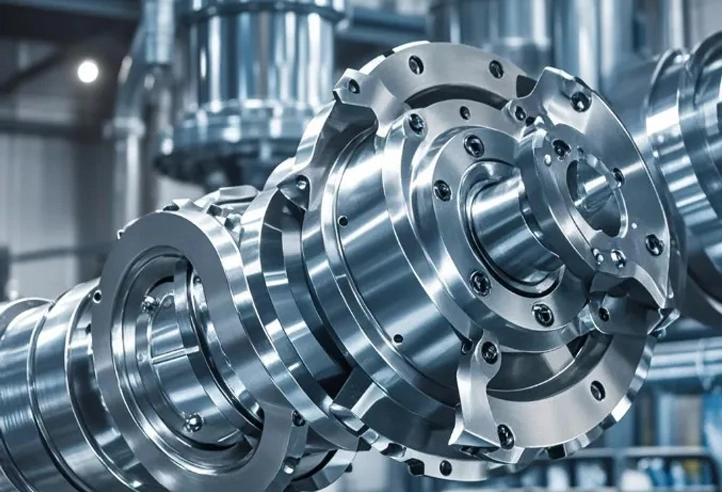There are many types of centrifugal pumps, and the classification methods vary. Traditionally, they are categorized by structural type. Additionally, they can be classified by specific speed into low-specific-speed pumps, medium-specific-speed pumps, and high-specific-speed pumps; by operating pressure into low-pressure pumps, medium-pressure pumps, and high-pressure pumps; by the form of the pump casing joint into horizontally split pumps and vertically joint face pumps; by pump shaft position into horizontal pumps and vertical pumps; and by use and liquid characteristics into water pumps, oil pumps, corrosion-resistant pumps, etc. Moreover, the API 610 standard is the internationally recognized authoritative technical standard for centrifugal pumps used in the petroleum, heavy chemical, and natural gas industries. According to the 10th edition of the API 610 standard, centrifugal pumps are divided into three major categories and 18 subcategories.
In the process of pump design and selection, different types of pumps, depending on their installation method, structure, and bearing method, meet various specific working condition requirements. For single-stage cantilever pumps and double-ended support pumps, they have different design advantages to adapt to different working environments and medium delivery requirements. Below, we will introduce several common types of pumps and their characteristics in detail, especially the "OH type" and "BB type" series pumps, which are widely applied in the industrial sector.
OH1 Pump: Base-mounted single-stage cantilever pump (not meeting all requirements of this standard).
OH1 pumps are designed with a base-mounted structure and are suitable for conditions where strict standard compliance is not required. They are suitable for some conventional delivery tasks but may need customization based on specific demands in modern applications to ensure their performance and stability.
OH2 Pump: Centerline-mounted single-stage cantilever pump.
OH2 pumps feature a bearing housing integrated with the pump that can buffer all rotor loads, with the driver mounted on the pump base. The pump and driver are connected via a flexible coupling. This structural design provides high stability during operation and is suitable for applications requiring higher speeds and higher flow rates, particularly for medium-pressure medium delivery.
OH3 Pump: Vertical single-stage cantilever pipeline pump with independent bearing housing, using a flexible coupling.
OH3 pump has an independent bearing housing that provides higher load-bearing capacity and connects the driver and pump body via a flexible coupling. This design effectively reduces axial force impact, extending the equipment's lifespan, commonly found in processes requiring high precision and stability.

OH4 Pump: Vertical single-stage cantilever pipeline pump without a bearing housing, using a rigid coupling.
The OH4 pump adopts a design without a bearing housing, connecting to the driver via a rigid coupling. It is suitable for conditions with strict requirements for pump size and weight. Its simple design makes installation and maintenance more convenient, fitting low to medium-load delivery tasks.
OH5 Pump: Vertical single-stage cantilever pipeline pump with the impeller directly mounted on the motor shaft.
OH5 pumps simplify the mechanical structure by mounting the impeller directly on the motor shaft, reducing friction losses in the drive part and effectively increasing pump efficiency. This design is particularly suitable for high-frequency and continuous operation environments.
OH6 Pump: Single-stage cantilever pump integrated with a high-speed gearbox, with the impeller directly mounted on the gearbox output shaft, no coupling between the gearbox and the pump.
The OH6 pump is characterized by its integration with the high-speed gearbox, with the impeller directly connected to the gearbox output shaft. This design reduces the use of couplings and increases transmission efficiency. The gearbox connects to the driver via a flexible coupling, suitable for high-performance applications requiring precise flow and pressure control.
BB1 Pump: Axially split single-stage or double-stage double-ended support pump.
BB1 pumps use an axially split structure, suitable for medium flow and medium pressure scenarios. Their double-ended support design provides stronger stability and load-bearing capacity, suitable for long-term high-load conditions.

Pump type bb2: Radially split single-stage or double-stage double-ended support pump. Pump type bb2 uses a radially split structure, able to withstand higher pressures, suitable for scenarios requiring higher stability and durability. These pumps are common in tasks needing high flow and high-pressure delivery, such as in the petrochemical and mining fields.
BB3 Pump: Axially split multi-stage double-ended support pump.
BB3 pumps are multi-stage designs capable of providing higher lift and pressure, suitable for systems requiring multi-stage pressurization. Their axially split structure makes disassembly and maintenance more convenient, suitable for high-pressure liquid delivery scenarios.
BB4 Pump: Radially split multi-stage double-ended support single casing pump.
BB4 pumps use a radially split design, with multi-stage pressurization providing higher lift, and their single casing structure reduces leakage paths, enhancing sealing and operational stability. Suitable for scenarios requiring high efficiency and low leakage, such as high-pressure liquid delivery in the petrochemical industry.
BB5 Pump: Radially split multi-stage double-ended support double casing pump, also known as a barrel pump.
BB5 pumps have a double casing design, providing stronger sealing and leakage resistance. Their multi-stage design makes them suitable for complex conditions requiring ultra-high lift and high-pressure output, widely used in large-scale petrochemical, oil, and gas extraction fields.
Selecting the appropriate pump type is crucial for ensuring system operational efficiency and long-term reliability of the equipment. OH type - cantilever pumps and BB type - double-ended support pumps each have unique advantages and can be reasonably selected based on actual working conditions. When selecting pumps, consider not only the pressure-bearing capacity and flow requirements but also the pump's installation method, drive structure, and sealing performance. Accurate selection can maximize pump life, reduce maintenance costs, and ensure safe and efficient system operation.
